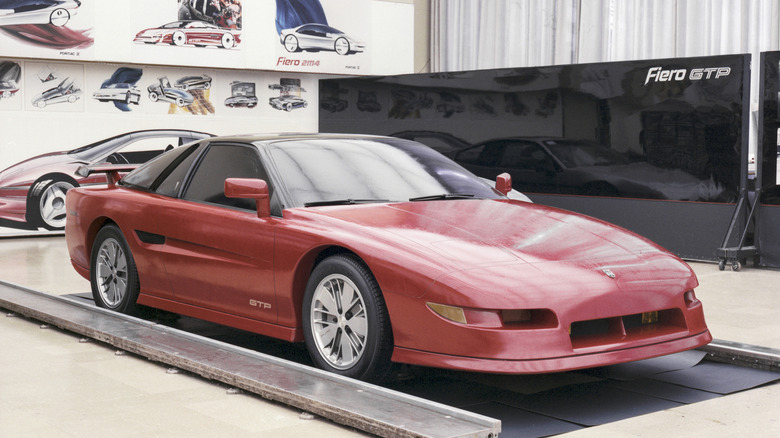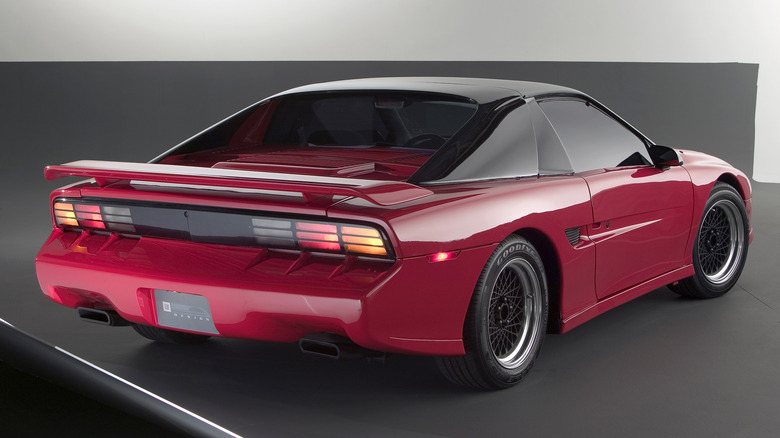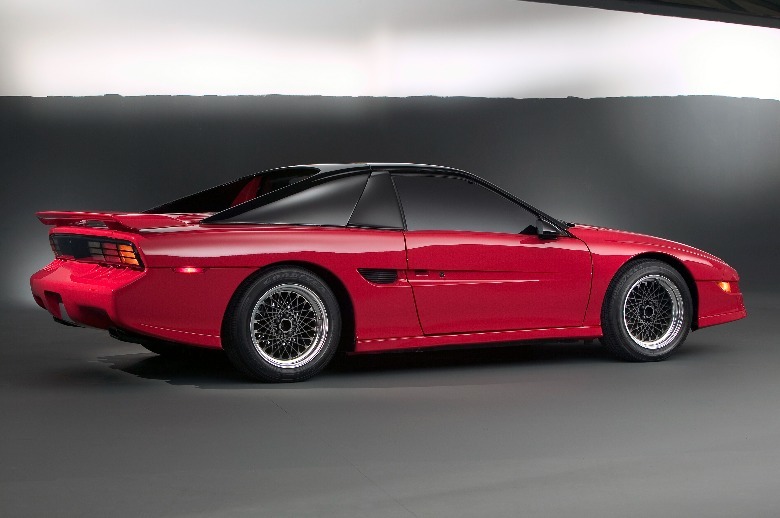GM Concept Photos Show Off The Second-Gen Pontiac Fiero That Was Never Produced
One could argue the Pontiac Fiero came at the wrong time, but it remains an iconic two-seat sports car that predated the Chevy C8 Corvette's rear-engine architecture by about three decades. The Fiero was a hit when it debuted in 1984. Pontiac sold more than 100,000 Fieros in its maiden production year, and nearly 300,000 units left the factory in the first three years.
The stellar sales figures gave then-Pontiac chief designer John Schinella, who penned other GM classics like the first-gen Chevy Camaro, third-gen Corvette, and a few Cadillacs from the 1960s, the motivation to start working on a much-awaited successor.
However, the second-gen Fiero will forever be a "what could have been" in auto history. By 1987, only 46,581 Pontiac Fieros had left the factory, less than 20% of the plant's capacity. Considering the Fiero required a two-story custom drill and milling machine for assembly, GM had no choice but to discontinue the Fiero in 1988 after a five-year roller coaster of exhilarating highs and crashing lows.
Second-generation Pontiac Fiero concept: Potential for greatness
Even though the first-gen Pontiac Fiero was a mishmash of GM parts bolted to a steel space frame with bolt-on plastic body panels, it had its share of merits. For starters, the panel gaps were among the best in the industry, and the bespoke space frame gave it stellar crash safety scores.
Then again, the standard Iron Duke 2.5-liter four-cylinder engine was too portly for a two-seat sports car, and GM engineers had to shoehorn the motor behind the Fiero by downsizing the oil pan, which led to overheating and fire issues.
The first-gen Pontiac Fiero was far from perfect, although the second-gen concept would have corrected all its predecessor's faults. The styling is an evolution of the previous Fiero's wedge-shaped countenance, but the real talking point is what's behind the seats. The rumor mills suggest a proper 16-valve four-banger or a high-strung turbocharged V6 engine was in the cards, and GM went to Porsche to improve the Fiero concept's handling and canyon-carving abilities.
The second-gen Fiero would have given Ferraris and Porsches a run for the money. But would GM consider resurrecting the name as a two-seat, retro-inspired, sporty electric car like Hyundai N Vision 74? One can only hope.


